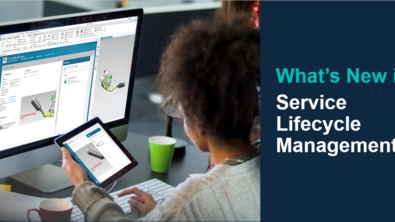IDC Recognizes Servitization and SLM as Key to Aftermarket Business Success

Read the IDC analyst report on driving revenue growth through Servitization.
The aftermarket business is at a turning point. Manufacturers have treated aftermarket services as a reactive function, addressing service requests, managing spare parts, and handling warranty claims using outdated, homegrown, or legacy systems. However, nowadays, this approach is no longer sufficient. Manufacturers demand seamless, proactive, and value-driven service experiences. The future of the aftermarket business will be defined by data-driven decision-making, AI-powered service delivery, and interconnected ecosystems that enhance efficiency and customer satisfaction.
The Evolving Landscape of Aftermarket Services
To stay competitive, organizations must shift from operational efficiency metrics to a broader set of key performance indicators (KPIs) that focus on customer outcomes and value delivery.
This transformation is already taking shape in several key ways:
- AI-driven Service: AI and machine learning are becoming the foundation of predictive and prescriptive maintenance, reducing unplanned downtime and optimizing service operations.
- Connected Digital Thread: Seamlessly linking engineering, sales, and service teams through an integrated digital ecosystem enables faster and more informed decision-making.
- Enhanced Partner Ecosystems: Open service ecosystems allow organizations to collaborate with third-party service providers, technology partners, and dealers to deliver a more holistic customer experience.
- Data-Driven Efficiency and Productivity: Real-time insights improve aftermarket sales and service teams’ internal or dealer-based effectiveness, ensuring faster service response times and better resource allocation.
- Customer-Centric Value Creation: Businesses are prioritizing personalized service experiences that focus on long-term value rather than just responding to isolated service events. By understanding customer needs better, companies can create tailored service offerings that enhance satisfaction and loyalty.
Key Concepts Shaping the Future of Aftermarket
- Servitization: The shift from selling standalone products to offering “product as a service.” This model focuses on usage-based pricing, uptime guarantees, and remote monitoring. By adopting servitization, companies unlock new revenue streams and strengthen customer relationships.
- Service Lifecycle Management (SLM): A holistic approach to managing a product’s service needs throughout its life. SLM integrates service engineering, customer support, field service, spare parts management, and warranty administration to ensure a seamless and efficient service experience.
- Digital Thread: A continuous, integrated data flow connecting all product lifecycle stages. By eliminating data silos and enabling real-time visibility, organizations improve service efficiency and customer experiences.
- Digital Twins of Service: Virtual replicas of products or service operations that incorporate real-time data and analytics. Digital twins help predict failures, optimize maintenance strategies, and reduce downtime.
- IoT-Driven Service Innovation: IoT-enabled devices transmit real-time performance and usage data, allowing businesses to shift from reactive repairs to predictive maintenance and new data-driven service models.
Building the Future of Aftermarket Services
By embracing AI, Servitization, digital twins, and IoT-powered service models, businesses can:
- Deliver proactive, predictive, and prescriptive maintenance
- Enhance service efficiency and reduce operational costs
- Strengthen customer relationships through outcome-based service models
- Create new revenue streams through data-driven offerings
The aftermarket business is no longer just about repairs and spare parts; it’s about creating seamless, intelligent, and value-driven service experiences. As digital technologies evolve, aftermarket leaders must rethink their strategies and invest in solutions prioritizing customer success. The future is data-driven, connected, and customer-centric.
Learn more about Teamcenter Service Lifecycle Management
Check out the latest in Teamcenter SLM in this What’s New article
Hear how Siemens customers leverage Teamcenter SLM for success
Watch the video to learn more about the role of SLM in service excellence


